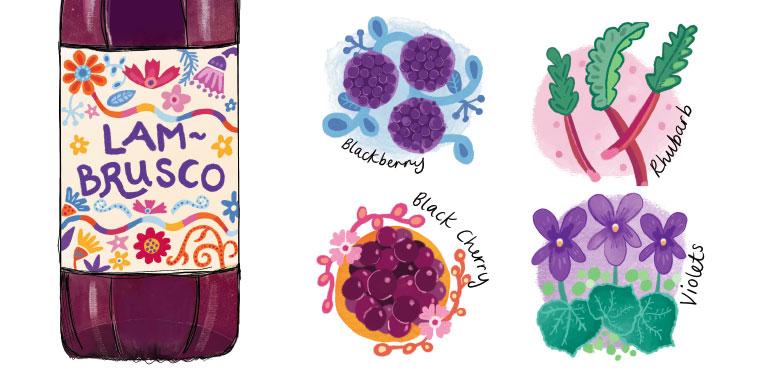
Wine
Facts on Lambrusco
{ lam-broo-sko}
Most Australian wine drinkers will know little about Lambrusco. For those who do know a little about it, most will think little of it. The sub-$10 bottles and cheap casks emblazoned with Lambrusco that large liquor retailers sell certainly do not help build or convey a premium image. Neither do memories of that lightweight, overly sweet, fizzy wine that perhaps your relatives offered you at family gatherings. Quality Lambrusco is hard to find in Australia, but a few examples made by small, passionate producers offer an education in just how good it can be when it’s crafted with finesse and care.
Lambrusco in Italy
Lambrusco is the name of a wine and the collective term for a number of red grape varieties - approximately 60 different varieties. The name is derived from ancient Rome and roughly translates to ‘wild vine’, so-called for its ability to grow anywhere and for its high yields. The number or varieties called Lambrusco is a result of the Romans using the term to label any vineyard planted with vines not sourced from outside a cultivated vineyard. Confusing, yes. However, all these grapes are red, and all are made into either a lightly sparkling (frizzante) or fully sparkling (spumante) red wine in a range of dry, off-dry and sweet styles.
Traditionally the wines were made in the same method as Champagne, with the secondary fermentation taking part in the bottle in which it was sold. An export boom in the 1980s resulted in most wines being made using the more time- and cost-effective tank fermentation (or Charmat) method, like the vast majority of Prosecco. Lambrusco is grown across a number of regions in Italy, but Emilia-Romagna in central Italy is the variety’s heartland.
Lambrusco in Australia
Lambrusco is not widely planted in Australia. Like many other varieties of Italian heritage, Lambrusco was introduced to Australia by the Mildura-based Chalmers family. They imported the first vines in 2001 with a fully sparkling (spumante) wine first released in 2012 from their vineyard at Heathcote in Victoria. As well as producing their own wine, the Chalmers sell Lambrusco fruit to a number of small producers from across the country. Unlike in Italy where all Lambrusco will have varying levels of ‘fizz’, you will find both sparkling and dry table wine examples.
Characters of Lambrusco
Lambrusco makes very dark-coloured wines. Irrespective of style, the wines are very aromatic with notes of violets, black cherries, black olives and liquorice. Full-bodied and intense, the flavours mirror these aromas with black fruits, olives, herbs and liquorice all common. Lambrusco has high levels of acidity, and an underbelly of savoury tannins.
Food matches for Lambrusco
Lambrusco has an easy affinity with food. Its high natural acidity and savoury tannins allow it to contrast the rich and fatty nature of red meat dishes and hard cheese. Emilia-Romagna is a culinary powerhouse, and like all Italian regions the notion of “what grows together, goes together” is a constant. Bolognese, Parma ham (prosciutto), and Parmesan cheese are all local delights and pair perfectly with a glass of Lambrusco. Opt for mushroom, beetroot and lentils as vegetable-based options that are delicious accompaniments.